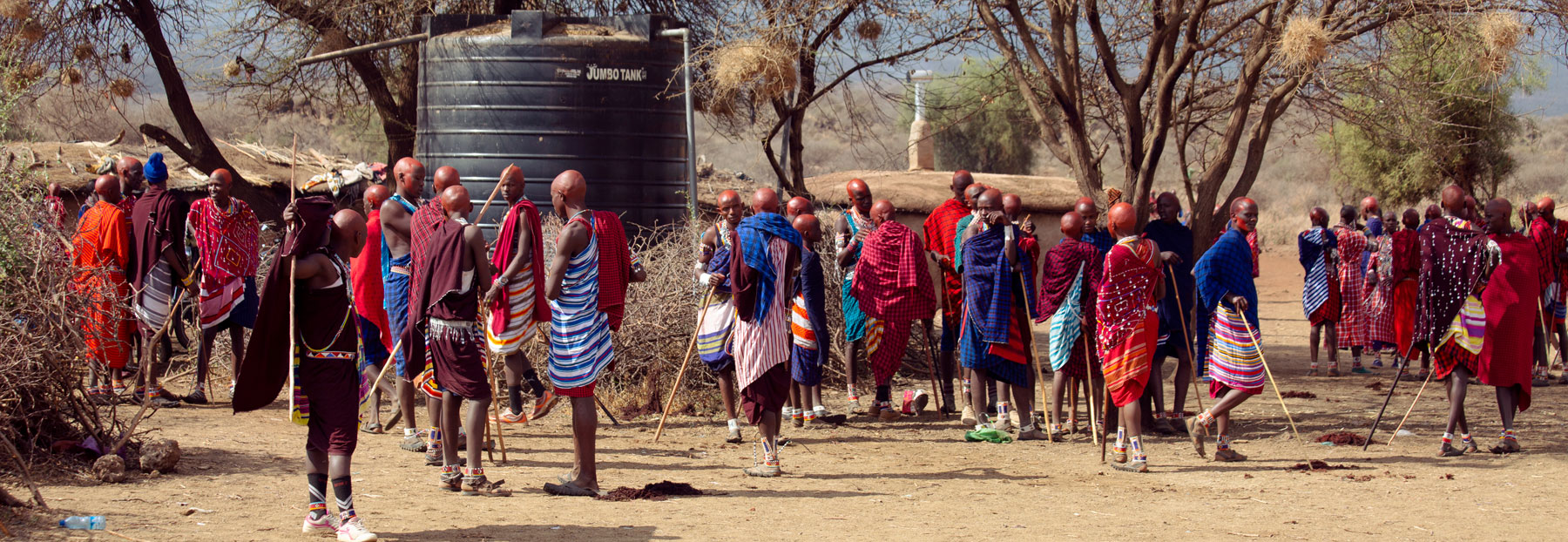
MCV is committed to bringing clean water to the Maasai in East Africa. Maasailand is experiencing critical levels of water stress which represents a major challenge to Maasai’s path to economic empowerment, healthcare, education, gender equality, improved livelihoods, and cultural preservation. Access to safe, affordable, and reliable drinking water and sanitation services are basic human rights, however, the data below shows we have are far behind in achieving the Sustainable Development Goal (SDG) 6: water and sanitation for all by 2030.
MCV currently has 30,000 people on our waiting list in 5 villages waiting for us to deliver clean water solutions.
Please consider becoming a monthly donor or making a one time generous contribution to save lives.
Data on Global Water Crisis
- 29% of the world population lack safely managed and reliable drinking water and 784 million people around the world are without basic water access
(that’s more than twice the population of the United States).
- More people die from unsafe water than from all forms of violence, including war.
- Two million preventable deaths occur annually due to inadequate water and sanitation, with the greatest burden falling on children.
- Diarrheal disease kills one child every 60 seconds. Diarrheal diseases, caused primarily by unsafe water and poor sanitation, kill more children under 5 years old than malaria, AIDS, and measles combined.
- 40% of the world population lack proper sanitation.
(Only 25% of Kenyans have access to water, soap, and handwashing facilities at home).
Gender Equality
- Addressing the needs of females in relation to water, sanitation, and hygiene is a key driver in achieving gender equity.
- In Sub-Saharan Africa, it is estimated that women spend at least 16 million hours a day collecting drinking water, while men spend 6 million hours, and children 4 million hours. This causes women to experience more poverty because they don’t have time to engage in education or income-driven activities which causes women to be trapped in a cycle of poverty.
- Lost time gathering water significantly reduces productive farming time for women in parts of the developing world.
With safe water nearby, it’s estimated that women could feed 150 million of the world’s hungry.
- Women make up on average 43% of the agricultural labor force in developing countries.
In Kenya, 86% of farmers are women.
- Women have higher exposure to waterborne illnesses and deaths.
- Women have specific hygiene needs during menstruation, pregnancy, and child-rearing. One million deaths each year in developing countries are associated with unclean births. Infections account for 26% of neonatal deaths and 11% of maternal mortality. Clean water access dramatically improves maternal and newborn health.
- Women and girls are more vulnerable to abuse and attack while walking to and using a toilet or open defecation site.
Maasai women also experience more attacks with wildlife.
Education
- 1/3 of schools have no safe water supply or adequate sanitation, leaving girls to use unsafe toilets or forced to go outside the school grounds, for adolescent girls, the presence of a safe water supply and toilet facilities can be the difference between dropping out and getting an education.
- An estimated 400 million school days are lost each year due to water-related diseases, with 272 million lost to diarrhea alone.
Healthcare
- 22% of the health facilities in the least developed countries, including Kenya, have no safe water.
Climate Change
- Climate Change causes natural disasters and displacement, these figures are projected to rise as temperatures do.
- Rainfall is decreasing in Sub Saharan Africa due to climate change
- Flood and droughts are increasing, 74% of all natural disasters between 2001 – 2018 were water-related
- Floods and droughts cause 166,000+ people to die and over 3 billion affected over the past 20 years causing $700 billion in damage.
Women and children are reportedly 14 times more likely than men to die during these disasters.
- 3+ million people (majority women and children) are displaced each year by sudden-onset water-related disasters
(figures vary slightly year to year, however it has doubled since the 1970s).
- Climate change is considered to be a poverty multiplier, which could force 100 million people into extreme poverty by 2030.
Food Insecurity
- 800+ million people are currently hungry and chronically undernourished, by 2050 global food production would need to increase by 50% to feed the more than 9 billion people projected to live on our planet. Hunger is increasing in Sub-Saharan Africa due to increased droughts and floods.
Indigenous Peoples
- 370 million Indigenous peoples account for 5% of the global population, yet make up 15% of the total extremely poor, often illiterate, unemployed, and without safe water access. Indigenous peoples lag behind the non-indigenous population in terms of access to water supply and sanitation services.
Increasing Population
- The population on the African continent is predicted to grow by more than half a billion by 2050, increasing water stress.
Economy
- For every $1 invested in safe water and sanitation, a yield of $5 – $28 is returned in increased economic activity and reduced health care costs. Access to safe water stimulates the economy for the long-term and is one of the best investments.
Global Water Usage
- 72% agriculture
- 16% households and services
- 12% Industries

